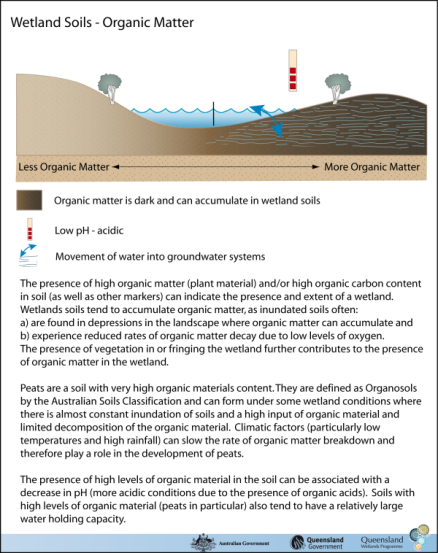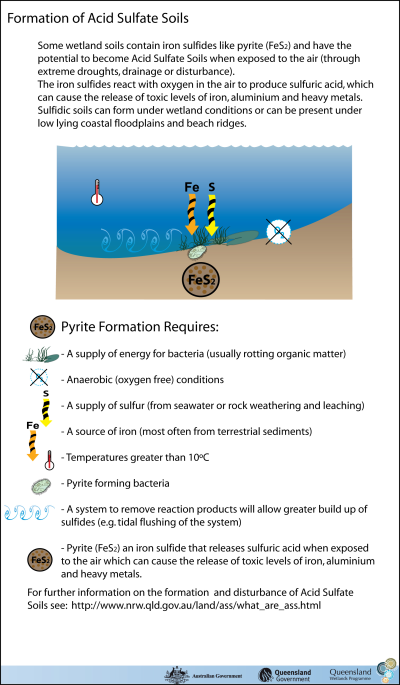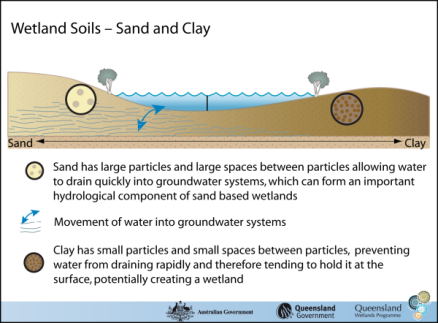|
|
Coastal and subcoastal non-floodplain grass sedge and herb swampCoastal and subcoastal non-floodplain grass sedge and herb swamp – GeomorphologyClick on elements of the model or select from the tabs below
This wetland habitat type can occur in:
SoilsAs coastal non-floodplain grass, sedge and herb swamps are most commonly found on sand dune systems and some clay systems, associated soils are often pale to dark humic sands or grey clay loams underlying dune systems—see soil sand, clay and organic matter for information on soil diversity and Wetland Soil Factsheets for local examples.
Last updated: 22 March 2013 This page should be cited as: Department of Environment, Science and Innovation, Queensland (2013) Coastal and subcoastal non-floodplain grass sedge and herb swamp – Geomorphology, WetlandInfo website, accessed 8 May 2025. Available at: https://wetlandinfo.des.qld.gov.au/wetlands/ecology/aquatic-ecosystems-natural/palustrine/non-floodplain-grass-sedge-herb-swamp/geomorphology.html |

 — Department of the Environment, Tourism, Science and Innovation
— Department of the Environment, Tourism, Science and Innovation






